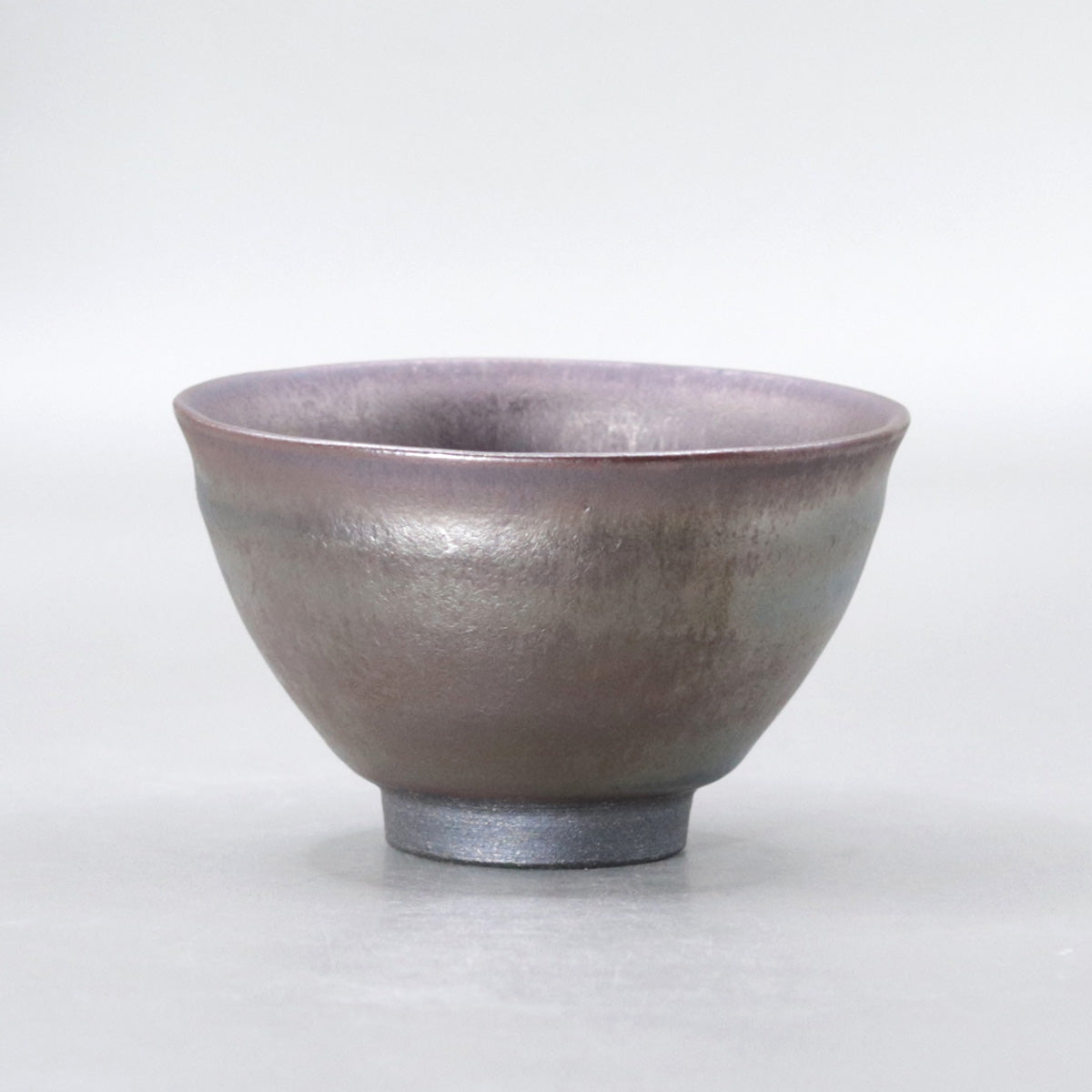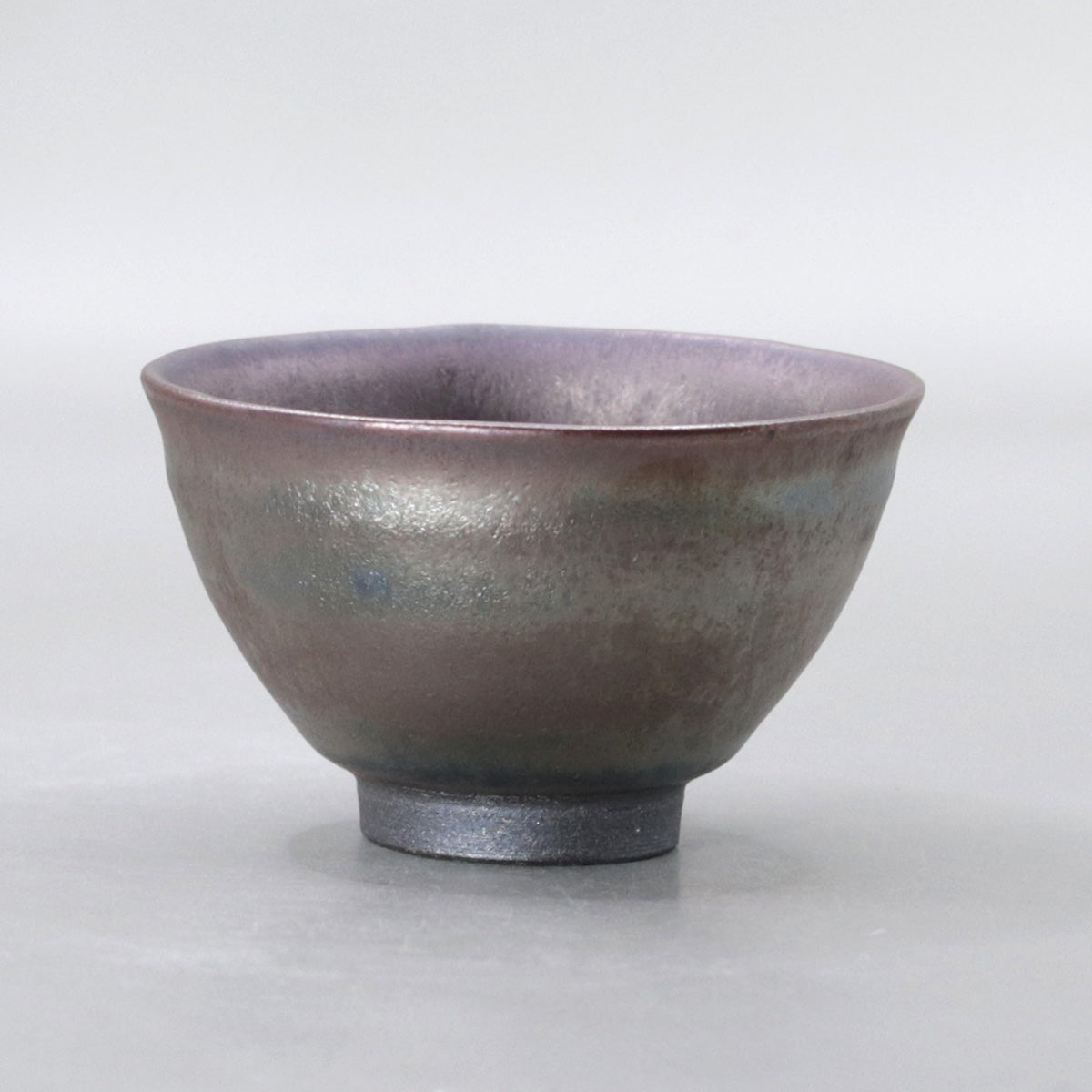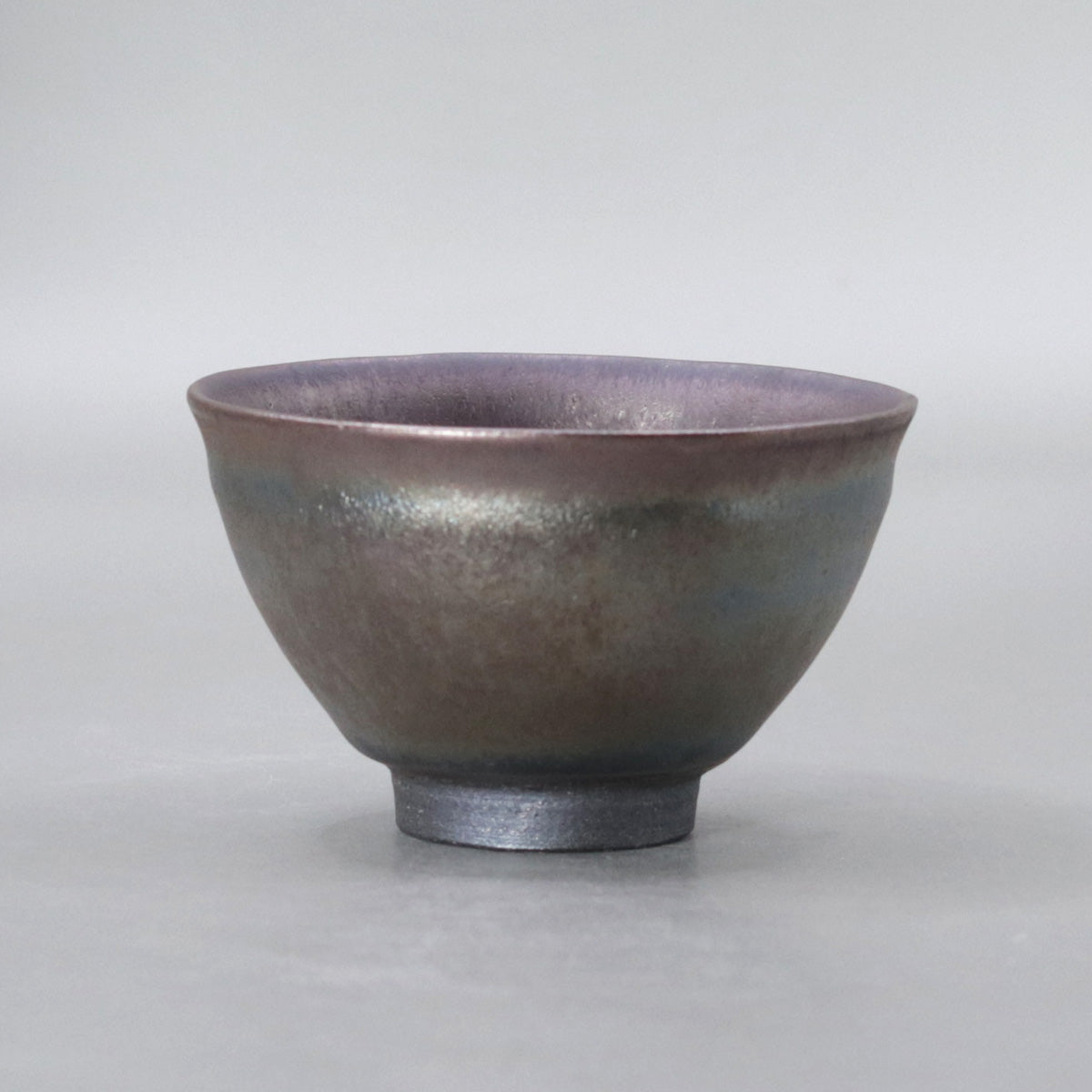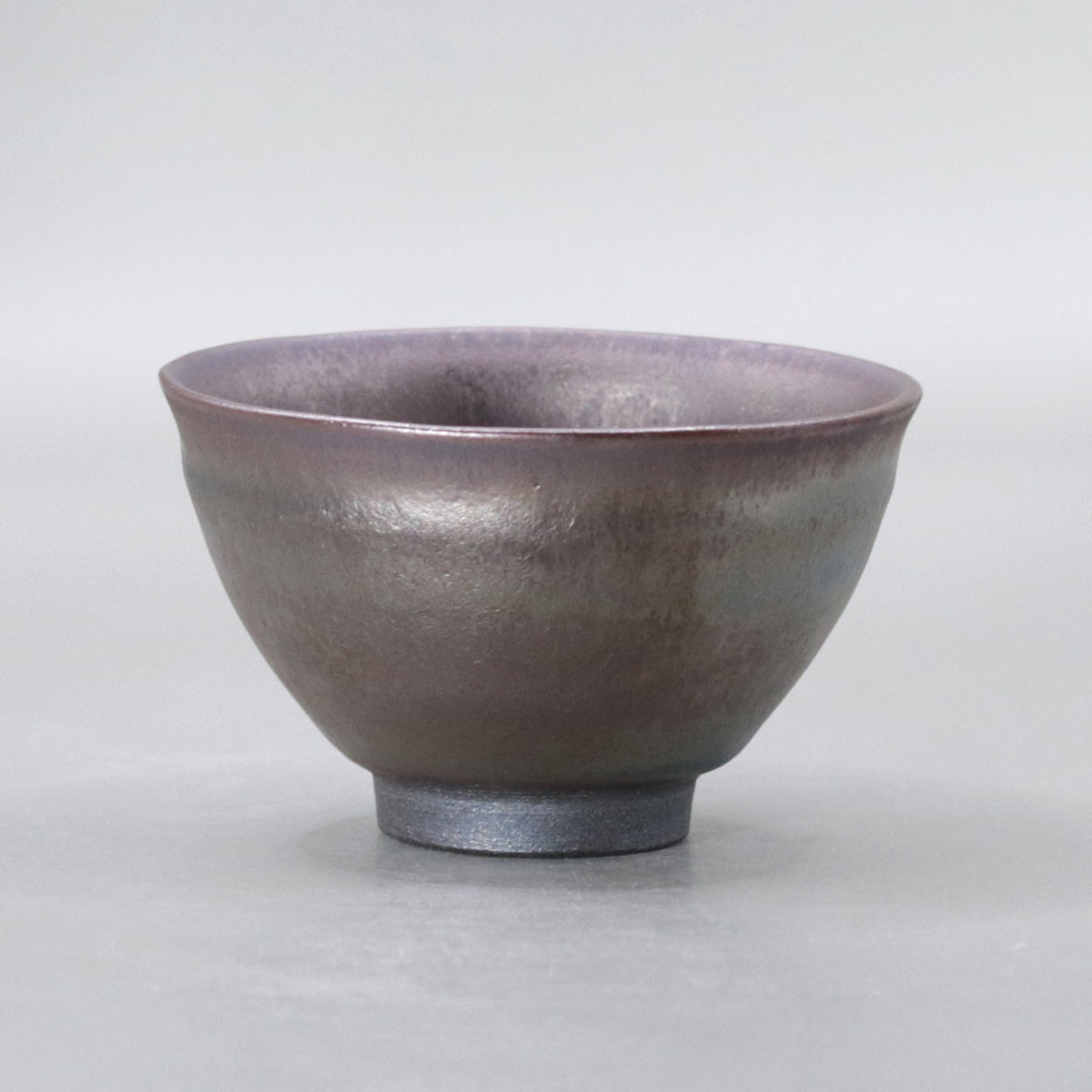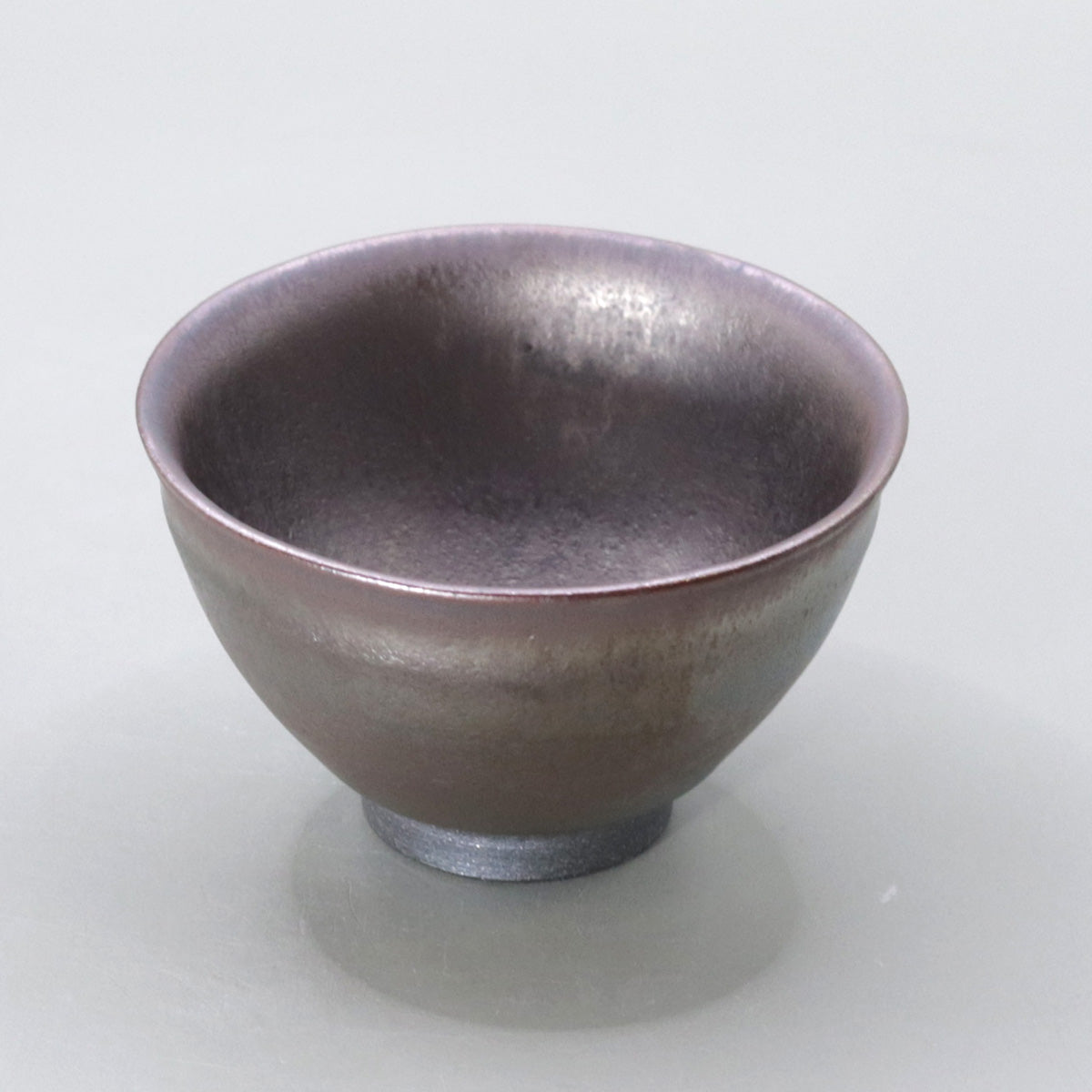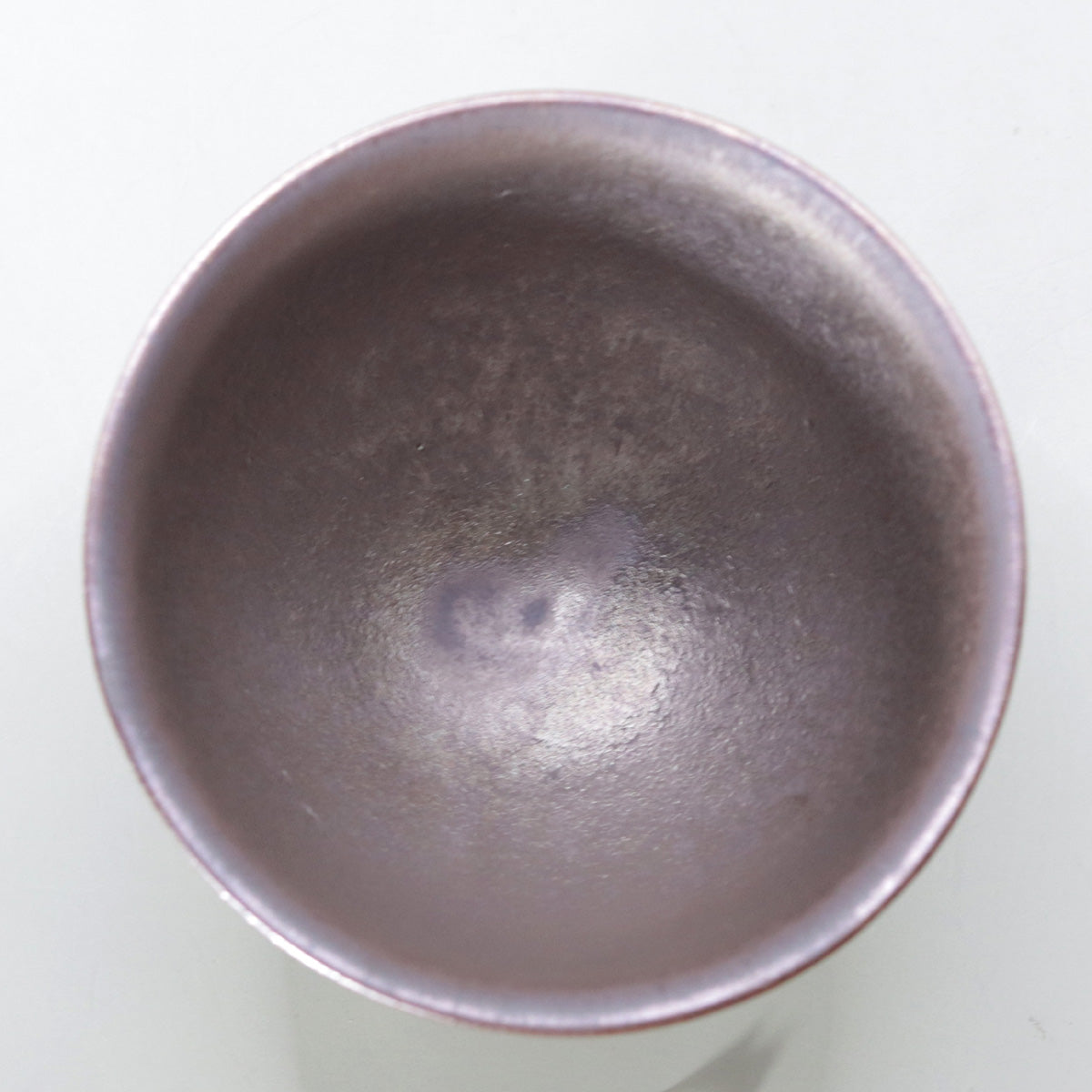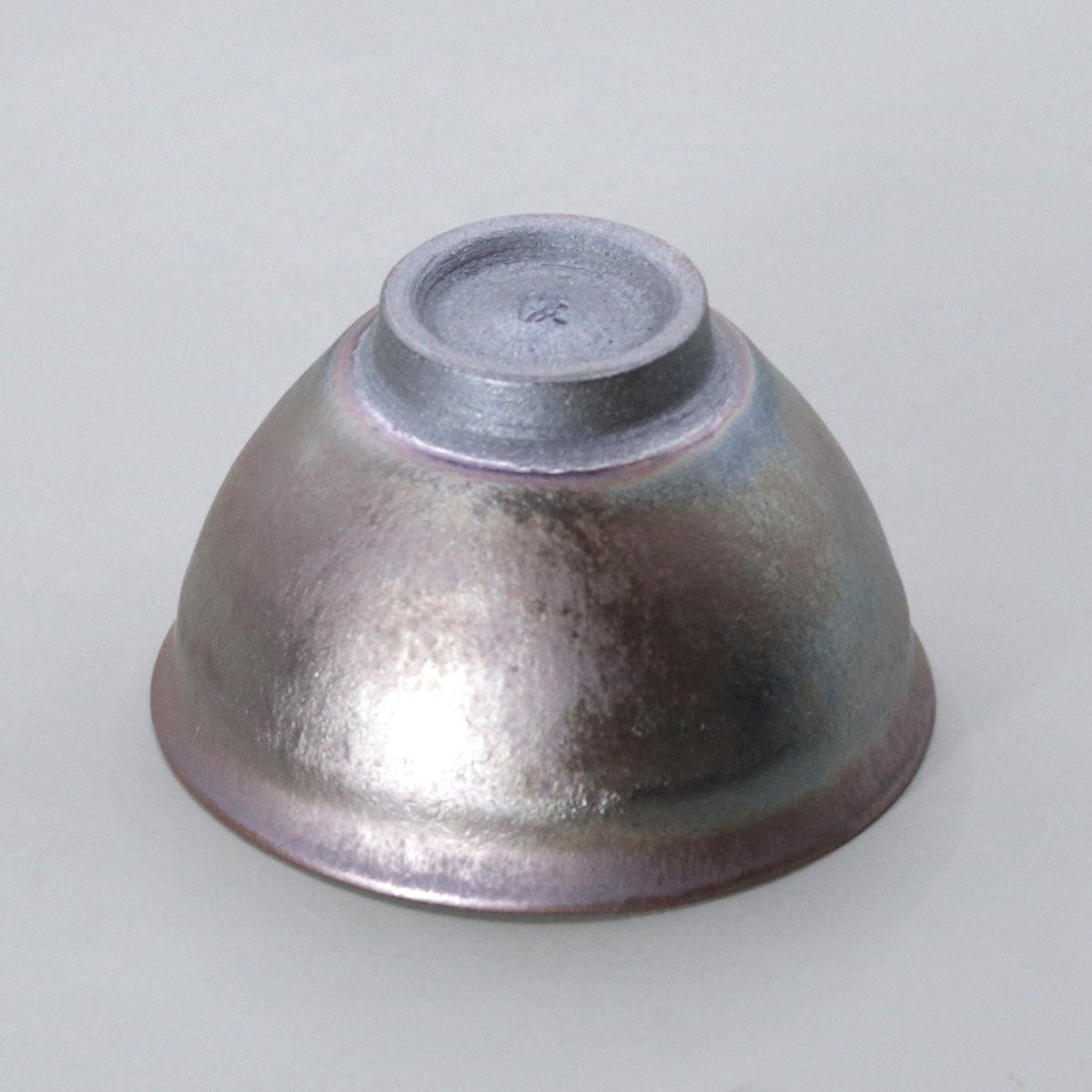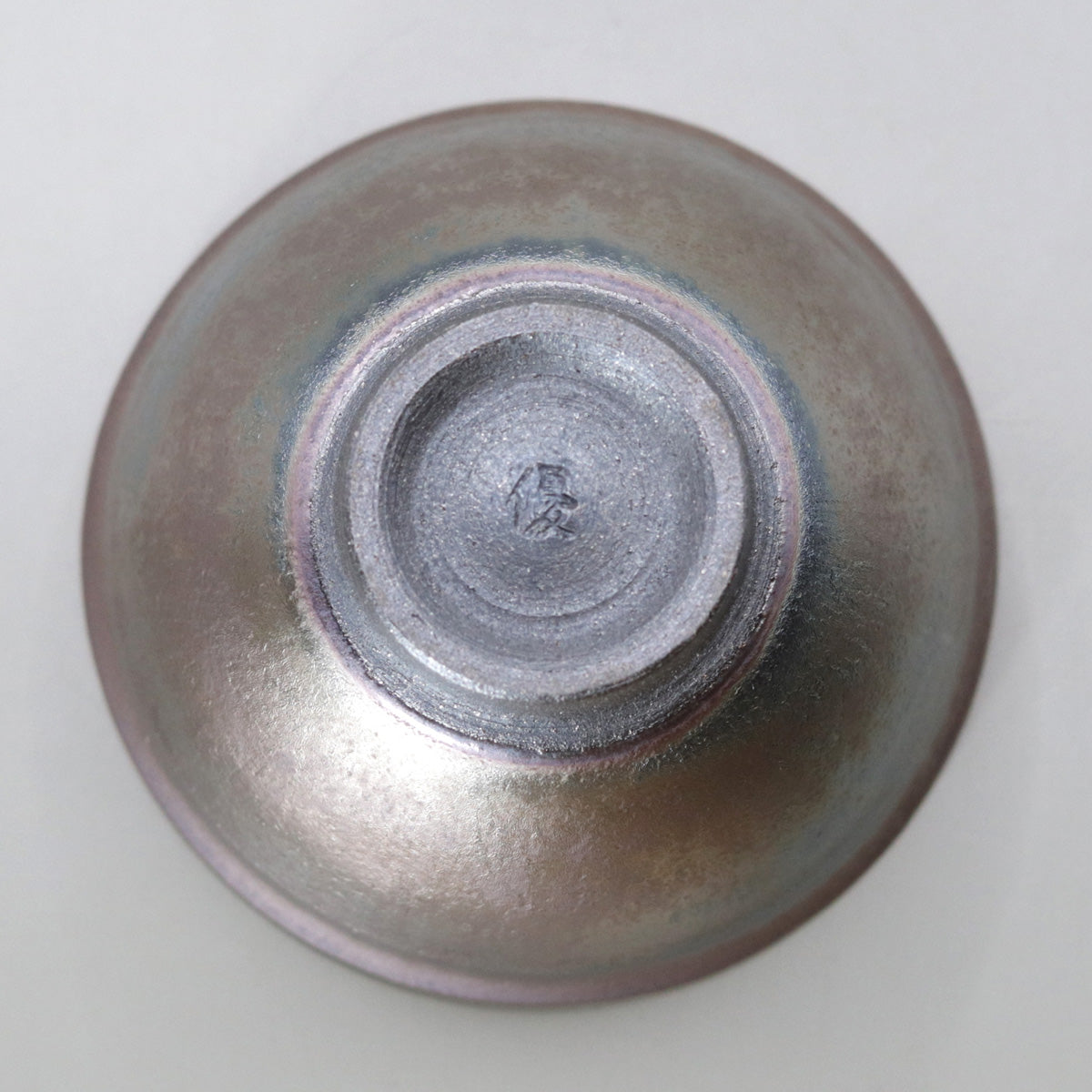Tenmoku glaze sake cup by Okada Yu
Tenmoku glaze sake cup by Okada Yu
Couldn't load pickup availability
Width: 8.3cm Height: 4.9cm
Tenmoku glaze sake cup
-- Created by Masaru Okada --
Work summary
This is a Tenmoku-glazed sake cup made by Okada Masaru, who runs a kiln in Uji-tanzan, Kyoto. The soft curves that flow from the gently open rim to the bottom, and the misty silver light that appears on the matte black glaze with a pale purple-gray hue, create a tranquil yet somehow warm appearance.
Features of the design
Mouth rim : The edges are rounded, but slightly curved outward, so that they gently touch the lips. The rim is slightly red, reminiscent of the Beni Tenmoku style.
Body : The base shape is a hemisphere, and after shaping on the potter's wheel, the surface is pressed lightly with the pads of the fingers to create a subtle undulation. This enriches the shadows in the glaze, and creates a different appearance depending on the viewing angle.
Base : A low cut base with a limited width. The sides of the base are lightly planed, providing stability when placing the sake cup on it and a comfortable grip.
Glaze and technique
Color development of Tenmoku glaze : After firing the feldspar glaze, which contains a lot of iron, with a reducing flame, a short exposure to an oxidizing flame at the end of the firing process creates a gradation of purple-gray to silver-gray to blue-ink on a black background. The glaze surface is semi-glossy and has a texture that feels moist and clingy to your fingertips.
Silver haze : Fine iron crystals float in the matte part like mist, making it look like a pale silver veil. Under strong spot light, the crystals shine like a nebula, evoking a tranquil cosmic view.
Clay and reduction : Mr. Okada mixes clay from around the coal mine with fine clay from Seto, adjusting the balance between plasticity and firing strength. The stable base, which is resistant to distortion even when strongly reduced, supports this delicate glaze.
Historical background
Tenmoku glaze originated from the black-glazed bowls of Jian Kiln in Fujian Province during the Song Dynasty, and is said to have been brought to Japan by Zen monks during the Kamakura period. Among them, the purple-tinged "Konoha Tenmoku" and "Haikabushi Tenmoku" are rare, and were considered to be precious scenery that only came about by chance due to the balance of oxidation and reduction in the kiln. This work can be said to be the result of an attempt to control that chance with modern technology and reproduce it stably.
Aesthetic intent and spirituality
This sake cup, wrapped in a veil of purple gray, has both the serenity of the Zen concept of "emptiness" and the sparkle of a once-in-a-lifetime encounter brought about by the kiln transformation. When sake is poured into it, the faint light that floats on the surface of the liquid is reminiscent of the pale purple sky before dawn, giving the drinker a deep, lingering aftertaste.
How to use and points to note
Suitable for room temperature to slightly warm sake : The matte glaze keeps the sake at a gentle temperature, allowing the aroma to develop gradually.
Choice of light source : The silver haze appears in the warm light of incandescent lamps or candles, while the purple-gray gradation stands out in daylight LEDs. Enjoy the completely different expressions depending on the time of day and lighting.
Also as a tea bowl : The inside is slightly raised, making it more suitable for thin tea and gyokuro tea than thick tea. The green of the tea stands out against the black glaze.
This sake cup, with a silver mist floating in the purple gray, is a masterpiece that demonstrates the kiln change control technology that Mr. Okada has cultivated over many years. The moment you sip your cup while gazing at the infinite universe hidden in the silence will add a quiet splendor to your daily life.
Share








Multi-Column
-
[I will send it to you quickly and carefully]
We carefully package each product in a way that suits it best.
Also, delivery times vary depending on the piece (vessel, etc.).
Items that already come with a box will be shipped within 1-3 days of the order date.
For items that require a box to be made after your order, it will take approximately 30 days for production to be completed and then shipped.
In either case, once we have confirmed your order, we will contact you by email to inform you of the delivery date.
-
[Requests when purchasing pottery]
Even products that look the same may differ slightly in color, shape, size, etc.
The way the glaze is used, the power of the kiln, the firing method, the season, and the humidity also affect the appearance of the pottery.
Please understand the individuality of each piece of pottery and enjoy the unique warmth of handmade.

